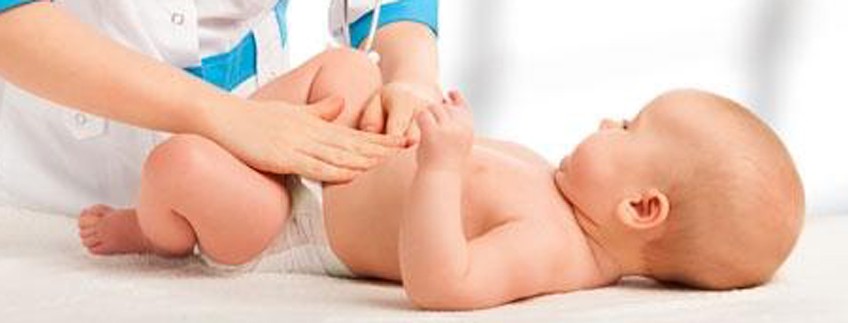
Introduction
Colic is characterised by unexplained bouts of crying in an otherwise healthy infant, sometimes lasting for up to a few hours at a time. It usually starts a few weeks after birth, but will get better as time goes by. By the age of 4 months, most children would have outgrown this condition.
During an episode of colic, the infant can cry uncontrollably, and it might seem impossible to calm the child down. For this reason, many parents feel distressed and helpless, and might blame themselves for the situation even though colic is not due to any wrongdoing on their part. Family support is extremely important and might alleviate the anxiety that the new parents would be going through.
Signs & Symptoms
The following symptoms might present themselves in an otherwise healthy, fed and cleaned baby:
- Cries at same time each day, usually in late afternoon and evening
- Loud, distressed crying that might be more high pitched than usual crying
- Bloated tummy and passes gas when he cries due to swallowing of air during the episode
- Arches back, clenches fist and draws knees into belly
When to Seek Medical Attention
- Has fits
- Has a bluish tinge to his or her lips
- Has a fever
- Has no appetite and refuses liquids
- Presents with any other symptoms that make you suspect an underlying condition
Causes
Colic is a condition that is not fully understood by healthcare professionals. There are many theories regarding the causes. Some experts propose abdominal pain, while others suspect allergies, abnormal regulation of hormones in the gut or overstimulation of the baby’s senses. However, the root cause is still undetermined at this point of time.
Lifestyle modifications
Because much is still unknown about colic, there is no universal method that works on most children while experiencing an episode. However, children may respond to the following:
- Burp baby after each feed, and make sure that bottle teats are not too big
- Having a warm bath or a soothing massage
- Swaddling by wrapping infant in a blanket to restrict limb movements
- Rocking the child gently in your arms, a rocker or swing, or go for a car ride
- Exposure to low, humming noises such as a fan or the washing machine
- Offering the child a pacifier
Treatment options
It is not certain if the products listed below will help with your child’s colic. If your baby does not respond in a week, it would be best to stop the treatment and try lifestyle modifications instead.
- Simethicone helps to get rid of excess air in the baby’s tummy by joining up little gas bubbles, making it easier to burp. This might help if flatulence in the stomach is the source of the baby’s discomfort.
- Lactase is an enzyme that helps to break down lactose, a sugar found in milk. If you suspect that your baby has a deficiency in this enzyme, adding lactase drops to the baby’s milk might help.
- Probiotics are good bacteria which are thought to be beneficial for the digestive tract. Available in a drop form, probiotics are widely used in children, although they might not be efficacious in treating colic.
- Dicyclomine is an anti-cramping agent that is available from your pharmacist. However, it must not be used in infants younger than six months of age as it has been suspected to cause weakness, breathing difficulties and seizures. Since most infants grow out of colic by the time they are 4 months old, this treatment might not be useful for this condition.

